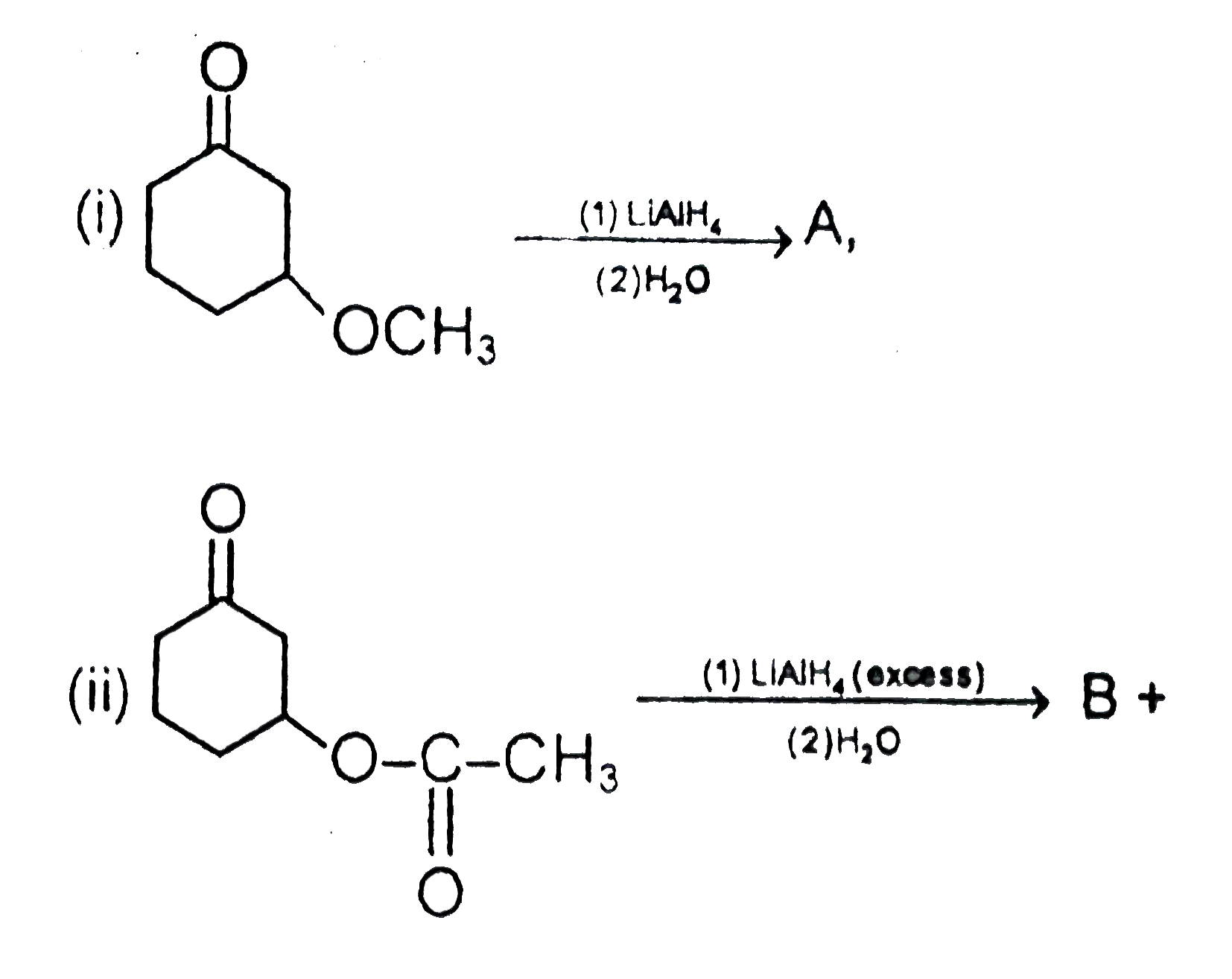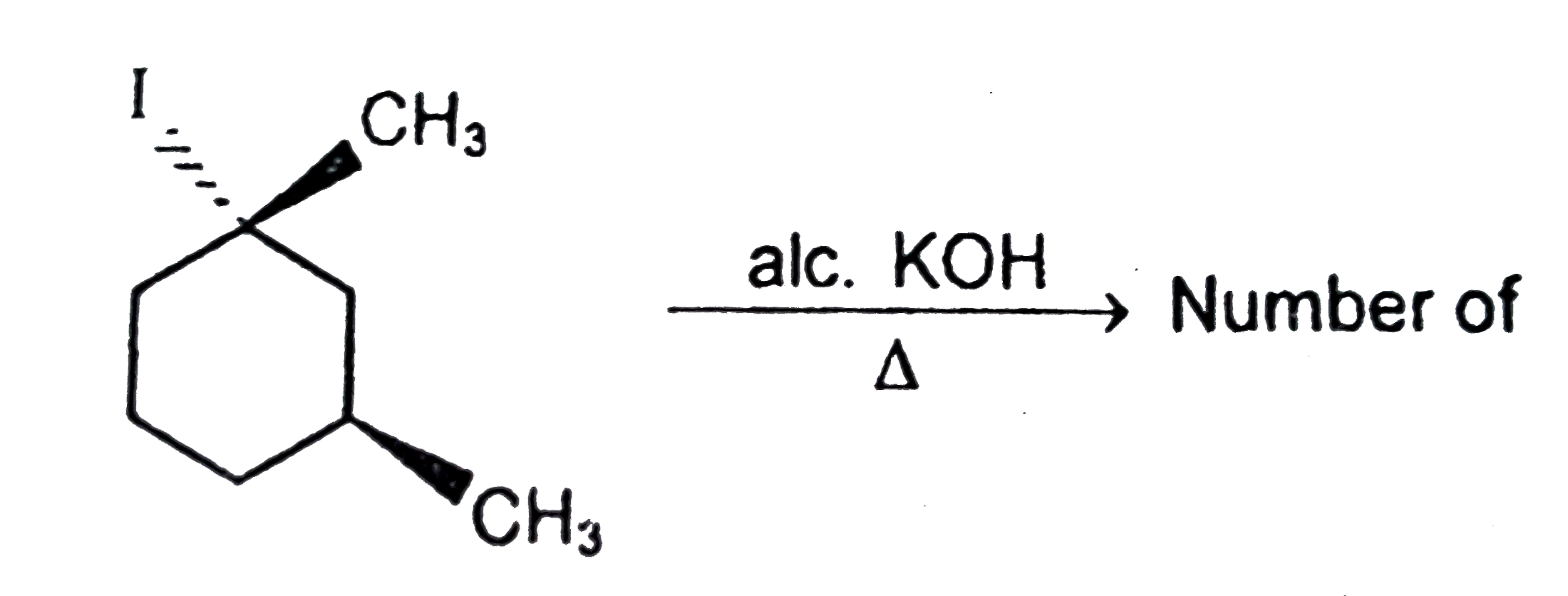Complete Solutions to CHEMISTRY of chapter TEST SERIES of Class 12 book with complete answers and questions
| Class 12 | CHEMISTRY |
| Chapter | TEST SERIES |
| RESONANCE | CHEMISTRY |
| Number Of Questions | 50 |
| Academic Year | 2023-24 |
Which of the following plots will obtained for a conductomeric titration of strong acid against a weak base?
04:27View SolutionFreundlich adsorption isotherm is given by the expression `x/m=kP^(1/n)` which of the following conclusions can be draw from this expression?
02:42View SolutionThe correct figure representing isothermal and adiabatic compression of an ideal gas from the same initial state is:
02:17View SolutionWhich of the following reactions does not occur during calcination?
01:34View SolutionWhich of the following compounds can show geometrical optical and conformational isomerism.
View SolutionWhich of the following is the strongest nucleophile?
View SolutionWhich of the following are low spin complexes which follow `EAN` rule?
View SolutionWhich of the following statement(s) is/are correct?
View Solution`^^_(m)^(0)H_(2)O` is equal to ___
04:42View SolutionWhich of the following is/are oxide ores?
View Solution`Zn` Amalgan is prepated by electrolysis of aqueous `ZnCl_(2)` using `Hg` catode `(9gm)`. Current is passed through `ZnCl_(2)` solution for `1000` seconds to prepare a `Zn` Amalam with `25%Zn` by wt. (`Zn=65.4)`
View SolutionIn which of the following electrolysis in aqueous medium, mass of anode decreases and `pH` of solution remains unchanged?
03:40View SolutionWhich of the following reaction/s give same product?
05:07View SolutionThe correct statements among the following is/are
04:48View SolutionWhich of the following substrates is/are more reactive than ethyl bromide for `S_(N)2` reaction?
View SolutionChoose the correct option(s)
View SolutionMetallic gold frequently is found in aluminosilicate rocks and it is finely dispersed among other minerals. It may be extracted by treating the crushed rock with aerated sodium cyanide solution. During this process metallic gold is slowly converted t `[Au(CN)_(2)]^(-)`, which is soluble in water. After equlibrium has been reached, the aqueous phase is pumped off and the metallic gold is recovered from it by reacting the gold complex with zinc, which is converted to `[Zn(CN)_(4)]^(2-)`, Gold in nature is frequently alloyed with silver is also oxidised by aerated sodium cyanide solution.
The correct ionic reaction for the process is//are:View SolutionMetallic gold frequently is found in aluminosilicate rocks and it is finely dispersed among other minerals. It may be extracted by treating the crushed rock with aerated sodium cyanide solution. During this process metallic gold is slowly converted t `[Au(CN)_(2)]^(-)`, which is soluble in water. After equlibrium has been reached, the aqueous phase is pumped off and the metallic gold is recovered from it by reacting the gold complex with zinc, which is converted to `[Zn(CN)_(4)]^(2-)`, Gold in nature is frequently alloyed with silver is also oxidised by aerated sodium cyanide solution.
Which of the follwing is/are correct for cyanide process of extraction of gold?View Solution`X(C_(4)H_(9)Br) underset(Delta) overset(alc.KOH)to Yoverset(Br_(2)//"CC"l_(4)) rarrZ underset(Delta) overset(NaNH_(2)(2eq.))to W underset(("Tollen's reagent")) overset(AgNO_(3)+NH_(4)OH)to`white ppt
Reductive ozonolysis of `Y` yields05:48View Solution`X(C_(4)H_(9)Br) underset(Delta) overset(alc.KOH)to Yoverset(Br_(2)//"CC"l_(4)) rarrZ underset(Delta) overset(NaNH_(2)(2eq.))to W underset(("Tollen's reagent")) overset(AgNO_(3)+NH_(4)OH)to`white ppt
Which of the following statement(s) is//are incorrect?05:48View SolutionIf 0.1 molar solution of glucose (Molecular weight `=180`) is separated from 0.1 molar solution of cane sugar (Molecular weight `=242`) by a semi -permeable membrane, then which one of the following statements is correct?
02:47View SolutionAmongst the following ions which one has the highest magnetic moment value?
02:39View SolutionThe oxidation number of cobalt in `K[Co(CO)_(4)]` is:
01:06View SolutionChoose the incorrect statement about corrosion on the metal surface.
View SolutionThe standard electrode potential for Daniel cell is `1.1V`. Calculate the standard Gibbs energy of the reaction (In KJ/mol)
`Zn_((s))+Cu_((aq))^(2+)rarrZn_((aq))^(2+)+Cu_((s))`01:15View SolutionElectrode potential for `Mg` electrode varies according to the equation
`E_(Mg^(2+)|Mg)=E_(Mg^(2+)|Mg)^(ϴ) -(0.059)/2 "log" 1/([Mg^(2+)])`
The graph of `E_(Mg^(2+)|Mg) vs log [Mg^(2+)]` is02:43View SolutionThe number of moles of water which must be electrolyzed to produce `22.4L` of `O_(2)` at `273K` and 2 atmospheric pressure is
01:59View SolutionChoose the incorrect statement from the following:
02:42View SolutionSelect in incorrect match
02:22View SolutionSelect the incorrect statement.
02:45View SolutionSilicones repel water due to:
03:11View SolutionThe colour developed when `Na_(2)S` is added to `Na_(2)[Fe(CN)_(5)NO]` is,
01:17View SolutionSelect incorrect statement
02:50View SolutionWhich of the following interface cannot be obtained?
01:07View SolutionWhich of the following statement is true?
03:00View Solution
`CH_(3)-CH_(2)-OH`
In the given reaction A & B are respectively:03:33View SolutionWhich of the following reaction correctly reports the major product?
04:19View SolutionRate of `S_(N)1` & `S_(N)2` reactions for the isomers of `C_(4)H_(9)Br` is
i. n- Butylbromide
ii isobutylborimide
ii s-Butylbromide
iv. t-Butylbromide
a. `i gt iigt iii gt iv ` for `S_(N)2`
b. `i gt ii gt iii gt iv` for `S_(N)1`
c. `iv gt iii gt ii gt` for `S_(N)2`
d. `iv gt iii gt ii gt i` for `S_(N)1`03:13View SolutionHow many position isomers are possible of trichlorocyclohexane which can show geometrical isomerism.
02:04View SolutionWhich of the following reaction correctly reports the major product?
04:31View SolutionThe correct order of `S_(N)2//E2` ratio for the % yield of product of the following halide is,
P.`CH_(3)-CH_(2)-underset(I) underset(|) overset (Ph) overset(|) (C)-CH_(3)`
Q. `CH_(3)-underset (Ph) underset(|) (CH)-underset(I) underset(|) (CH)-CH_(3)`
R. `CH_(3)-CH_(2)-I`
S. `CH_(3)-CH-underset(I) underset(|) (CH)-CH_(3)`02:35View SolutionWhich of the following is correct order?
02:34View Solution`CH_(3)-underset(CH_(3)) underset(|) (C)= CH_(2) underset("Peroxide") overset(HBr)to CH_(3)-underset(CH_(3)) underset(|) (CH)-CH_(2)Br` reaction intermediate of this reaction is:
02:13View SolutionIn which of the following reaction `CH_(4)` will be obtained?
i. `CH_(3)-MgBr+CH_(3)-C-=CH`
ii.
iii. `CH_(3)-MgBr+CH_(3)OH`
iv 04:42View Solution
04:42View Solution`S_(N)1` reaction underoges through carbocation intermediate as follows:
`R-X(aq.) overset("Slow") hArr R^(+)(aq.)+`
`X^(-) (aq.) underset ("fast") overset(H_(2)O)to ROH(aq.)+H^(+)(aq.)`
[R=t-Bu, iso-Pr, Me] `(X=Cl, Br, I)`
The correct statements are
I. The decreasing order of rate of `S_(N)1` reaction is `t-BuXgtiso-PrXgtEtXgtMeX`
II. The decreasing order of ionisation energy is `MeXgtEtXgtiso-PrXgt t-BuX`
III. The decreasing order of energy of activation is `t-BuX gt iso- PrXgtEtXgtMeX`03:49View SolutionIn Mond's process following chemcial changes occurs:
`underset(("Impure"))(Ni)+CO overset(330-350K)(rarr)[P]`
`[P] overset (450-470K)(rarr) underset(("Pure")) (Ni)+CO`
Coordination number of `Ni` in `[P]` is…...02:01View Solution`Na_(2)[PtBrCl](CN)]`
No of geometrical isomers `=x`
No of optical isomers `=y`
No of ions produced in
aqueous solution `=z`
Fine the value of `x+y+z`
`Na_(2)[PtBrCl(CN)]`03:31View SolutionHow many of the following gases/vapours are colourless?
`CO_(2),SO_(2),H_(2)S,NO_(2),HCl,Br_(2),I_(2),CO,Cl_(2)`01:41View SolutionHow many reactions show correct major product?
 View Solution
View Solution
Number of possible alkene isomers will be:02:01View Solution
CHEMISTRY questions and complete solutions for chapter TEST SERIES of PHYSICAL, INORGANIC, AND ORGANIC CHEMISTRY of Class 12
